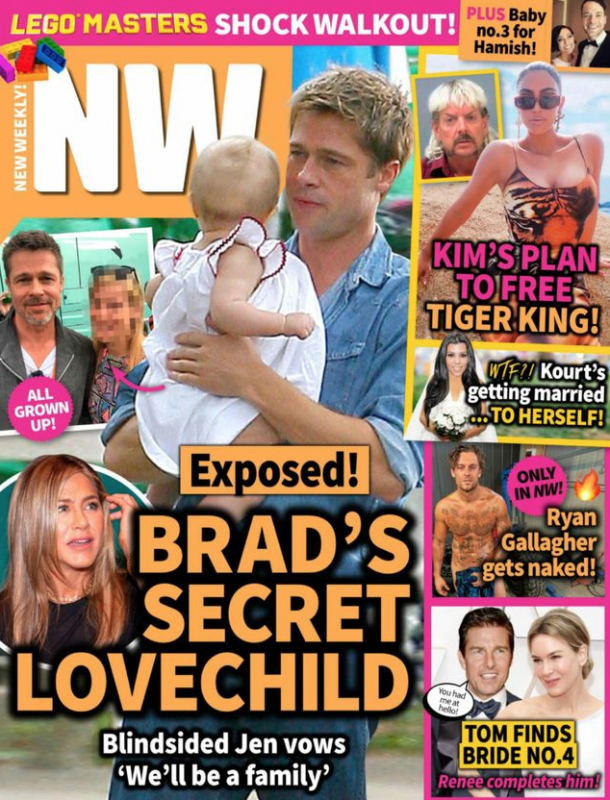@Benn98 What digital magazines would you class as a success?
That was borne by a website? Hypebeast magazine. Yes, I know, not on our radar. LOL. And we'd need analytics, which in this case can only be supplied by Issuu or Hypebeast themselves.
More on the (not so sudden) shutdown of those Australian magazines. I'm confused with this writer's assessment of laying all the blame on Bauer and nothing on the new owner. Last month before the sale, Bauer said they're pausing print on these titles, but hoped to return them to the newsstand in Sept/Oct. If sale negotiations started back in April, then surely the new owners must've known of this agreement, or better yet, probably even laid out the terms of pausing print themselves as part of the deal. And now, because they've seen that advertising probably won't return until 2021, they've decided to finally pull the plug and get rid of the staff they've kept hanging for months. Both companies are at fault imo, Bauer for leaving the staff in the lurch, and Mercury for buying staff and instantly sacking them.
Good riddance to the Bauers, the family that wrecked Australia’s magazine industry
Yesterday, Bauer Media closed eight of the most famous magazines in Australia. Mumbrella’s Tim Burrowes assesses where this leaves the industry.
July 22, 2020 9:12
by
TIM BURROWES
It says a lot about how far – and how fast – the Australian magazine industry has fallen that when Bauer’s press release arrived on Tuesday morning, it didn’t come as a surprise.
From the top end of the market, Harper’s Bazaar, Elle and InStyle.
From the health sector, Men’s Health, Women’s Health and Good Health.
And from the trashier end, NW and OK.
I’ll remember InStyle for putting on one of the glitziest magazine gala nights I’ve been to.
I’ll think of Men’s Health as a motivational, and occasionally inspirational, source of reasons to get back on a health kick.
And NW will be remembered as the waste of space typified by its final cover – made up stories about Brad Pitt (not) having a lovechild, Tom Cruise (not) getting married, and Hamish Blake (not) expecting a third baby.

NW – A work of fiction until the end
With the titles already suspended, there will be no final goodbye edition to readers.
But it will hopefully be the last piece of bad news we hear before the name Bauer disappears from the Australian media industry as the company rebrands in Australia and starts again under its new ownership.
And it seems fitting that the end should have come in as classless a way as possible, as that sums up the last eight years of Bauer family proprietorship.
When the COVID emergency led Bauer to suspend the magazine titles back in April, around
70 staff were made redundant and a similar number stood down.
At the time, few believed that the titles would come back, and others suspected the reason for suspending rather than closing was a cynical one.
Bauer told those stood down staff that it was unable to get them the government’s JobKeeper payments – the German parent company was either unwilling or unable to prove its revenues had fallen sufficiently for them to qualify.
It left those staff in a horrible limbo – without income but still technically employed.
The staff faced a dilemma – resign to try to access JobSeeker payments, or hang on in the hopes of a redundancy payout.
Now though, the Bauer family has left the building. The company is now in the hands of private equity firm Mercury Capital.
The sale was completed on Friday. And the first priority for the new owners was to do the humane thing and put the stood down staff out of their misery. I wonder how much the Bauers saved on the redundancy payments.
Next on the list – take down the Bauer sign from the offices in Park Street, Sydney. The name is tainted.
Soon the company once known as Australian Consolidated Press, then ACP Magazines, before it absorbed Emap Australia and
Pacific Magazines along the way, will change its name once more.
It’s the end of a disastrous eight years which saw the Bauer family’s half a billion dollar purchase price incinerated – they got back less than a tenth of that when they sold to Mercury, and would have had several loss-making years along the way.
But this can’t be explained by bad timing.
Bauer completed the purchase in September 2012, from close-to-bankruptcy Nine Entertainment Co.
By then the worst of the GFC was over. Bauer should have known what it was getting into – all the trends for the magazine industry were already in place.
The Hamburg-based company, led by Yvonne Bauer, seemed to assume it could replicate the business models that worked so well in making it a powerhouse in Europe. This included strong reader revenues and cheap, repurposable content.
But they failed to take into account the Australian magazine market’s heavier reliance on advertising dollars rather than reader revenue.
They struggled with poor local management, including
the notorious stint of CEO David Goodchild who continued to run H Bauer Publishing in the UK from the side of his desk too.
And they settled upon a baffling digital strategy which took the company into an online cul-de-sac from which it is yet to emerge.
Rather than building websites to make the most of its many famous mastheads, it launched the weaker, aggregated “Now to Love” network, consolidating content from the magazines.
Even today, a reader of Australian Women’s Weekly might go online to search for the title, but after one click would fall out of the AWW section, into Now To Love, and with a second click be stranded within Elle content. I just tried it, and that’s what happened to me.
That’s no way of building habits beyond print.
And that’s the biggest wound that Bauer will leave behind. The decade just gone was crucial for the traditional media to respond to the changing world. Radio dived into podcasting and streaming. Newspapers developed digital subscription strategies. The TV networks got into the video-on-demand game. The Australian magazine sector never got to grips with its present, let alone the future.
As the biggest player in the market even before the debacle of buying, then
trying to renege on buying, Pac Mags, Bauer made the weather for the magazine sector locally.
Yet it did little of the heavy lifting required to market the medium, while rival sectors increased their investments.
Even as the television industry was getting its act together with the launch of Think TV, Magazine Publishers Australia – the alliance of Bauer, Pac Mags and News Corp – went backwards.
Eventually it became Magazine Networks and faded further from view until it became a trade marketing body with no permanent staff. The savings on this were costly for the whole sector.
It doesn’t matter how effective a medium is, or how passionate readers are – the message, heard and understood, from media agencies was that this was a medium in retreat. They invested their clients’ ad dollars elsewhere.
The signals of weakness from magazines were everywhere.
Bauer was a key player in
the coordinated withdrawal by publishers from the Audited Media Association of Australia in 2016. Hating the quarterly trade press headlines about declining circulations, the magazine players seemed to figure that no coverage would be better than negative coverage.
It was a nuclear strike against transparency. So the medium disappeared even further from advertisers’ sights. The lack of bad news didn’t stop the agencies turning away from magazines – they simply forgot they were there.
And along the way, Bauer kept on closing titles. The list of mastheads they closed over the last eight years is longer than the list of those still open.
Eight in a day is still some kind of record though.
It ends the relationship with US company Hearst, which licensed many of those brands including Harper’s Bazaar, Elle, Men’s Health and Women’s Health.
I suspect that’s a reason why those mastheads – along with InStyle, licensed from Meredith Corporation – were particularly vulnerable.
In good times, that sort of franchise deal makes sense – the local publisher gets syndicated international content and just as importantly, familiarity for the international fashion brands as an appropriate place to advertise.
With franchised titles, a publisher is usually committed not only to sharing a certain percentage of revenue (perhaps 8%) with the masthead owner, but also they may be expected to deliver a minimum guarantee. In this market, who’d give that?
However, the closures also signal a punctuation mark.
CEO Brendon Hill has, until now, been a middle manager, forced to apologise (or more often remain silent) for the decisions of his bosses in Germany. The embarrassment of trying to avoid completing the Pac Mags purchase must have been excruciating.

Hill: No longer a middle manager
Now though, he works for Mercury, not the Bauer family. We’ll get to see what he can achieve with a supportive owner.
Often, being owned by private equity can spell bad news for staff. The model can be to strip out costs, artificially drive up profits and exit on a higher multiple in four or five years.
That won’t work for Mercury. There’s little fat left to cut. They’ll need to nurture the company instead.
And it helps that they paid so little for the asset. That means that once the company returns to profitability, there will be more dollars to invest in growth rather than repaying the original investment.
Soon, the company will have a new name. And it will still be Australia’s biggest magazine publisher.
And it owns some of the greatest media properties of all time. Australian Women’s Weekly, the jewel in the crown, still carries immense kudos. Luckily, brands are hard to kill.
Nonetheless, it’s a horrible time to be setting out on the journey. Advertising revenues were down for the sector by nearly 40% in April and 33% in June. Like the joke about the lost tourist looking for directions, if I were them, I wouldn’t start from here.
Nonetheless, it is a new start.
Mumbrella

